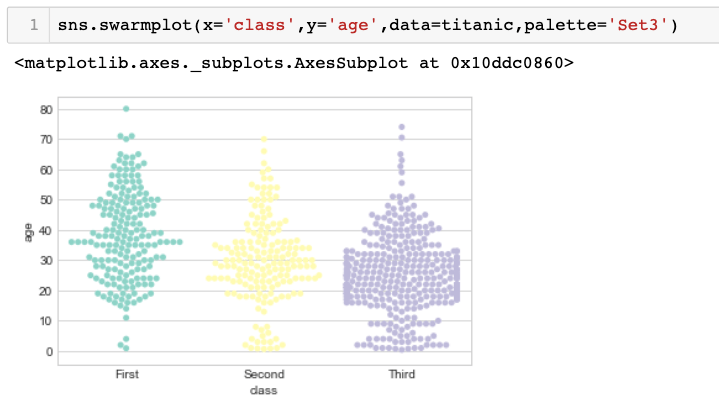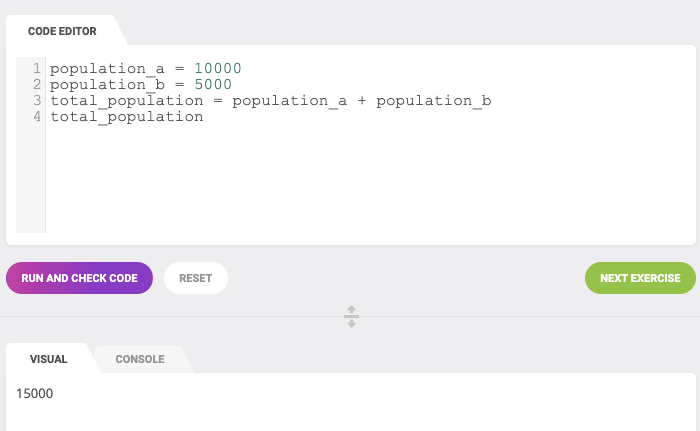Where to use Python?
Even though Python started as a general-purpose programming language with no particular application as its focus, it has emerged as the language of choice for developers in some application areas over the last few years. Some important applications of Python are summarized below:
Data Science
Python experienced a recent emergence in popularity charts, mainly because of its Data science libraries. A huge amount of data is being generated today by web applications, mobile applications, and other devices. Companies need business insights from this data.
Today Python has become the language of choice for data scientists. Python libraries like NumPy, Pandas, and Matplotlib are extensively used in the process of data analysis, including the collection, processing and cleansing of data sets, applying mathematical algorithms, and generating visualizations for the benefit of users. Commercial and community Python distributions by third-parties such as Anaconda and ActiveState provide all the essential libraries required for data science.
Machine Learning
This is another key application area of Python. Python libraries such as Scikit-learn, Tensorflow and NLTK are widely used for the prediction of trends like customer satisfaction, projected values of stocks, etc. Some of the real-world applications of machine learning include medical diagnosis, statistical arbitrage, basket analysis, sales prediction, etc.
Web Development
This is another application area in which Python is becoming popular. Web application framework libraries like django, Pyramid, Flask, etc. make it very easy to develop and deploy simple as well as complex web applications. These frameworks are used extensively by various IT companies. Dropbox, for example, uses Django as a backend to store and synchronize local folders.
Today, most of the web servers are compatible with WSGI (Web Server Gateway Interface) — a specification for the universal interface between Python web frameworks and web servers. All leading web servers such as Apache, IIS, Nginxetc can now host Python web applications. Google’s App Engine hosts web applications built with almost all Python web frameworks.
Image Processing
The OpenCV library is commonly used for face detection and gesture recognition. OpenCV is a C++ library but has been ported to Python. Because of the rapid development of this feature, Python is a very popular choice from image processing.
Game Development
Python is a popular choice for game developers. The PyGame library is extensively used for building games for desktop as well as for mobile platforms. PyGame applications can be installed on Android too.
Embedded Systems and IoT
Another important area of Python application is in embedded systems. Raspberry Pi is a very popular yet low-cost single-board computer. It is extensively used in automation products, robotics, IoT, and kiosk applications. Popular microcontrollers like Arduino are used in many IoT products and are being programmed with Python. A lightweight version of Python called Micropython has been developed, especially for microcontrollers. A special Micropython-compatible controller called PyBoard has also been developed.
Android Apps
Although Android apps are predominantly developed using Android SDK, which is similar to Java, Python can also be used to develop Android apps. Python’s Kivy library has all the functionalities required for a mobile application.
Automated Jobs
Python is extremely useful and widely used for automating CRON (Command Run ON) jobs. Certain tasks like backups, defined in Python scripts, can be scheduled to be invoked automatically by the operating system scheduler to be executed at predefined times.
Python is embedded as a scripting language in many popular software products. This is similar to VBA used for writing macros in Excel, PowerPoint, etc. Python API is integrated with Maya, PaintShop Pro, etc.
Rapid Development Tool
The standard distribution of Python, as developed by Rossum and maintained by Python Software Foundation, is called CPython, which is a reference implementation. Its alternative implementations — Jython, the JRE implementation of Python and IronPython — the .NET implementation, interact seamlessly with Java and C#, respectively. For example, Jython can use all Java libraries such as Swing. So the development time can be minimized by using simpler Python syntaxes and Java libraries for prototyping the software product.
The following summarises important tools and frameworks for different types of Python applications:
- Web Development: Django, Pyramid, Bottle, Tornado, Flask, web2py
- GUI Development: tkInter, PyGObject, PyQt, PySide, Kivy, wxPython
- Scientific and Numeric: SciPy, Pandas, IPython
- Software Development: Buildbot, Trac, Roundup
- System Administration: Ansible, Salt, OpenStack
- Compare strings in Python
- Convert file data to list
- Convert User Input to a Number
- Convert String to Datetime in Python
- How to call external commands in Python?
- How to count the occurrences of a list item?
- How to flatten list in Python?
- How to merge dictionaries in Python?
- How to pass value by reference in Python?
- Remove duplicate items from list in Python
- More Python articles
What is Python Used For?
Let’s clarify first. This article is not about snakes, it’s about coding in the fastest-growing programming language. That language happens to be named Python. In this article, we’ll go through a number of inspiring ways to use Python.
So, what is Python used for?
Why Code in Python?
You have probably heard about many different programming languages, including JavaScript, Java, C++, Ruby, and others. Why should you choose Python? That’s actually a very simple question. Python is the best programming language to start with because:
- Its simple syntax (structure) makes it very accessible to new learners.
- It is easy to read and understand because of its English-like commands.
- It is highly productive and usually requires fewer lines of code than other programming languages.
- It is very versatile and can be used for just about anything.
- Its many amazing libraries help programmers cut down on the initial development cycle.
I can continue like this, but I think you get the point.
I’m sure you understand what I did with this short Python code snippet. (From the Introduction to Python for Data Science course.)
Where Is Python Used?
Python is often recognized as the second most popular programming language after JavaScript. And its popularity is continuously growing.
There are many fields where Python already dominates – for example, developers working in machine learning and Artificial Intelligence use Python almost exclusively.
Python can apply to whatever you are interested in. For example, it is already being used in space projects, physical laboratories, astronomy, medicine, the music industry, and by movie studios, game developers, and smart-home developers.
This programming language is also very popular among tech leaders. Companies including Google, YouTube, Yahoo, Instagram, IBM, Uber, NASA, and Dropbox use Python.
What Can You Do with Python?
It’s not super exciting just to know that other people can do cool stuff with Python. It’s much more fun to do something yourself. So, let’s see how YOU can use Python after just a little bit of learning:
- Automating routine tasks. Python is perfect for writing scripts (small programs that automate simple tasks). For example, you can use Python to automatically generate and update Excel spreadsheets, crawl websites and pull information from online sources, parse PDFs and Word documents, or send out email notifications.
- Analyzing data. Python is also very popular in data analytics. When you code your own programs instead of using spreadsheets or other tools, you have more freedom and greater possibilities. And no, you don’t spend more time when using code. On the contrary, after you get some experience with Python – I’m talking about months, not years – you will be able to do the same analytics much faster.
As already mentioned, Python is a very productive language. Often, you’ll need only a few lines of code to generate a table with detailed analytics. This is possible because of Python’s great libraries. Beginners should start with the pandas library, which provides easy-to-use tools for manipulating tables and time series.
 The Python community has introduced a number of libraries that make the graph-generation process very quick and comfortable. The standard matplotlib library is good and teaches the basics of data visualization with Python. However, plots generated with matplotlib are often not very aesthetically pleasing, or they may require more than a few lines of code to become visually appealing. The seaborn library is highly recommended for plots, as it will help you to create very professional and complex visualizations with just a line of code. There are other free data visualization libraries available that also facilitate the generation of attractive, web-ready plots.
The Python community has introduced a number of libraries that make the graph-generation process very quick and comfortable. The standard matplotlib library is good and teaches the basics of data visualization with Python. However, plots generated with matplotlib are often not very aesthetically pleasing, or they may require more than a few lines of code to become visually appealing. The seaborn library is highly recommended for plots, as it will help you to create very professional and complex visualizations with just a line of code. There are other free data visualization libraries available that also facilitate the generation of attractive, web-ready plots.
If you are not impressed yet, here comes the coolest stuff you can do with Python:
- Build a blockchain. Yes, you can even build your own blockchain with Python. Furthermore, you don’t need a strong understanding of blockchain before you start coding. Actually, the fastest way to learn how blockchain works can be through building one.
- Get into Artificial Intelligence. Are you interested in data science, machine learning, and AI? As I already mentioned earlier, Python is a dominant programming language in these areas. It can be used to predict exchange rates, build a facial recognition system, program a self-driving car, teach robots how to jump, create chatbots, enable machine translation, and more.
Yet again, Python has multiple open-source libraries and frameworks that make the implementation of these complicated tasks relatively easy and fast.
After you get some experience in Python, you might fall in love with this simple programming language. Then you might choose to dive deeper into the programming world and discover other uses of Python, including web development, mobile/desktop app development, game graphics, and much more. Actually, with Python, you can do just about anything.
How to Start Your Python Journey
Ok, now you know what Python is used for. Do you also feel like knowing this programming language is some kind of superpower? How do you join the superheroes’ team?
If you have a little bit of time and lots of motivation, you can easily develop your Python skills through self-learning:
- Learn the Python basics with our courses Python Basics Part 1, Python Basics Part 2, and Python Basics Part 3.
- Learn the essential skills you’ll need for data analytics and data science with our Introduction to Python for Data Science course.
- Learn how to process unstructured text with our Working with Strings in Python course.
All the above courses contain lots of interactive exercises – you’ll start coding with Python right away, without any additional software or tutorials.
